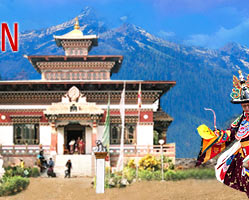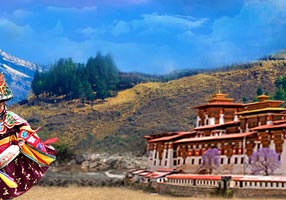Placed under the National Biodiversity Centre along with a herbarium, a seed gene bank, an agro-biodiversity unit, and an animal diversity section, the Botanical Garden aims to be a conservation area for scientific studies, be an educational resource for schoolchildren and visitors, display the rich varieties of the flora of the country and provide a recreational site for the public. The plant life forms represented here belong to different climactic zones. The Buddhist philosophy has been represented here by including a prayer wheel and chorten in the design of the garden, which makes it an ideal place for spiritual reflection and appreciate Nature. Some of the most interesting sites in the Royal Botanic Garden are:
- Aquatic Garden
- Arboretum displaying tree species from Bhutan's native broadleaf, deciduous and coniferous forests.
- Bamboo Garden, with species of bamboo used to build scaffolding and the bamboo species used to make traditional archery bows of Bhutan.
- Economic and Medicinal Plants Collection
- Fruit and fodder Gardens
- Japanese Garden developed with the help of Japanese technical experts.
- Map of Bhutan
- Orchid House displaying more than 800 species of orchids from different climatic regions in Bhutan.
- Rhododendron Collection, which is one of the largest in the world.
- Rose Garden
Bhutan’s Royal Botanical Garden at Serbithang is located at 2300 m above sea level and thus, plants can be displayed here from a range of altitudes. Conifers in the Garden include Chir Pine, Blue Pine, several species of Quercus and Acer. The Garden also has a good number of Bhutan's National Tree, the Cyprus, along with a number of native fruit trees and shrubs such as apples, pears, peaches and strawberries. There is a collection of medicinal and economically useful plants including more than 300 types of plants with medicinal uses and economically useful plants that are used for purposes such as roofing, making dyes, furniture and incense.




